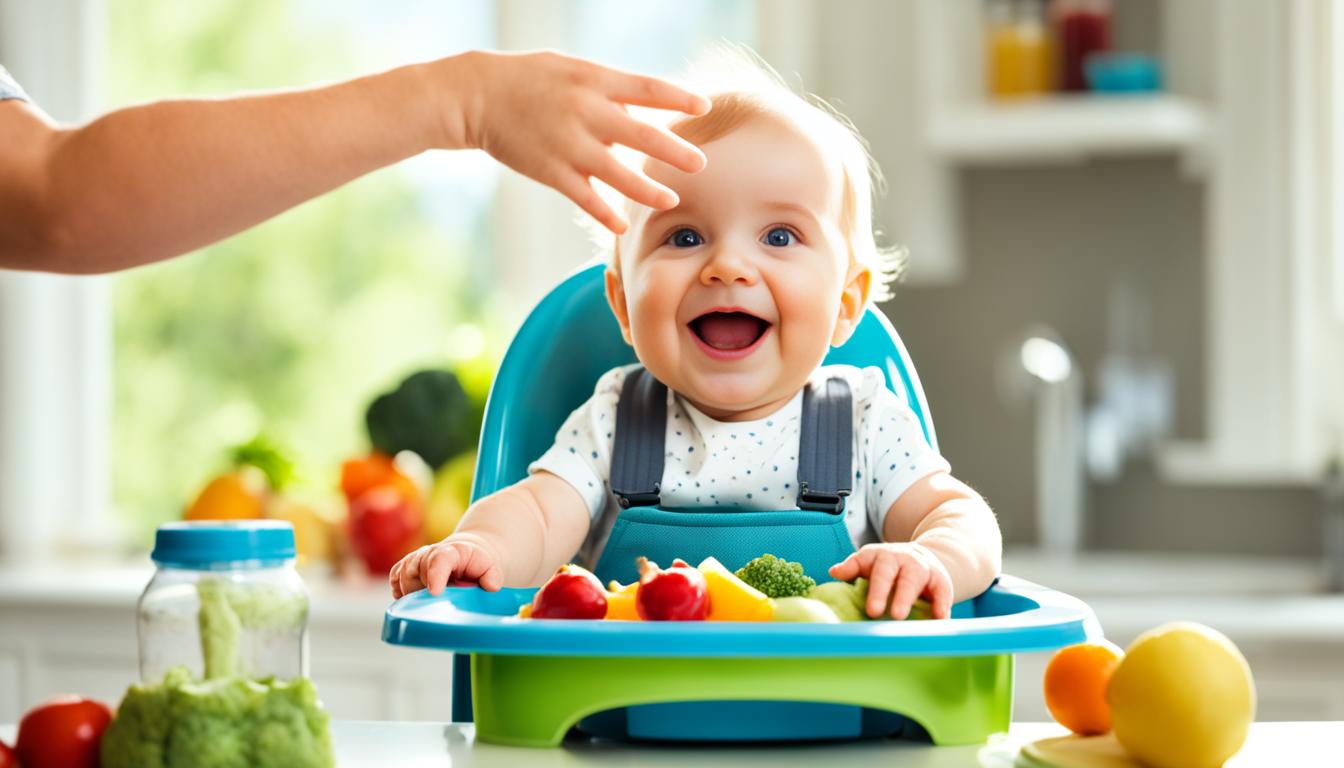Can Babies Eat Jello? Exploring Foods And When To Play
No American dinner, BBQ, or picnic is complete without Jello. It’s sweet, refreshing, and fun to eat! It’s also an easy-to-prepare dessert that nobody can mess up.
Gelatin goes back a long time in history, but it was around 1899 when “Jell-O” started to spread around US banquet tables. And by the 1900s, Jello was all over the country, advertised as “America’s most favorite Dessert.”
Today, people of different ages can recognize the colorful and jiggly dessert. Kids, in particular, are the target market of Jello. But can babies also be part of the jelly fun?
Skip To The Following Sections
Can Babies Eat Jello?
Babies can start eating solid food at 6 months, usually while breast or bottle-feeding. Parents can begin experimenting with table food once their babies can hold themselves up while sitting and swallow food without spitting it out.
While there is no wrong or right first food, you might want to skip Jello for now. While Jello is soft and easy to eat, it’s not a healthy option for kids.
What is in Jello, and is it Healthy?
Jello is primarily gelatin, which is made from collagen extracted from animal bones, skin, tendons, and ligaments. Jello also contains sweeteners, artificial coloring, and added flavors.
Jello is low in calories and fat-free, so you might see it advertised as a weight-loss food. However, a regular serving of Jello has around 18 grams of sugar. According to the American Academy of Pediatrics, kids 2 years and under should have no added sugar to their diet.
Jello also has low nutritional value, with no vitamins, minerals, or fiber on the label. And all those artificial additives won’t benefit your kid in the long run.
What is the Nutritional Value of Jello?
Jello is low in nutrients essential for a baby’s growth and development. A standard serving contains high levels of sugars and artificial flavorings, with almost no essential nutrients. Specifically, Jello lacks:
- Vitamins and Minerals: Essential for overall health, immune function, and developmental growth in babies.
- Protein: Crucial for muscle, tissue development, and various bodily functions.
- Fiber: Important for digestive health and regular bowel movements.
The high sugar content in Jello can contribute to unhealthy weight gain and dental problems, and it offers no nutritional benefits to counter these risks. Given that infants’ stomachs are small and fill quickly, it’s important that the foods they consume are nutrient-rich, which Jello is not.
Can Babies Eat Sugar-Free Jello?
Sugar-free Jello might seem like a healthier alternative due to the absence of regular sugar, but it’s not necessarily suitable for babies either. This variant often contains artificial sweeteners like aspartame or sucralose, which can have their own health implications and are not recommended for young children. Moreover, it still lacks nutritional value, offering no beneficial vitamins, minerals, or other nutrients.
Additionally, the taste of artificial sweeteners can still accustom a child to prefer overly sweet foods, potentially influencing their diet quality and food choices later in life. It’s advisable for parents to consult with a pediatrician before introducing foods with artificial sweeteners to their child’s diet.
Is Jello a Choking Hazard for Babies?
Jello’s unique texture can be a novel sensory experience for babies. However, its gelatinous and slippery nature also poses a choking risk, especially for younger infants who are still mastering their swallowing skills. While Jello tends to dissolve with saliva, large pieces can potentially block a small throat or cause a baby to gag.
For older babies and toddlers, while the risk is reduced, it’s not entirely eliminated. Parents and caregivers should supervise young children eating Jello, ensuring they are seated upright and not distracted during eating. It’s also prudent to serve Jello in small, manageable portions to minimize the risk.
What Other Dessert Options Can I Feed My Kid?
It’s not the end of the world if you can’t feed your baby jello. There are other ways you can give your baby a sweet treat without compromising health and flavor.
You can make your own Jello that is more nutritious and low in artificial ingredients. Many stores sell unflavored gelatin packets that are low in sugar and calories, and you can add your own flavoring to them. Skip the fruit powders and make your own blend of natural and organic fruits and veggies.
Alternatively, you can skip gelatin in general until your baby is much older. Fruits are the best dessert that you can give to a growing kid. Fruits are packed with all sorts of nutrients and can fight off illnesses.
You can start your tot with soft fruits like bananas, mangos, or boiled pumpkins. You can swap ice cream for frozen fruit pops or nice cream during the summer.
Jello Alternatives
Considering Jello’s nutritional shortcomings and potential health risks, parents seeking healthier alternatives have several options:
- Homemade Gelatin Treats: Using natural fruit juices and unflavored gelatin, parents can make healthier jello-like desserts without added sugars or artificial colors.
- Pureed Fruits: Especially for younger babies, pureed fruits offer natural sweetness along with essential nutrients.
- Yogurt with Real Fruit: Plain yogurt with fresh fruit provides calcium, protein, and other nutrients without unnecessary sugars.
- Applesauce: Unsweetened applesauce is a good source of fiber and vitamin C, and it’s gentle on baby’s stomach.
- Cottage Cheese with Soft Fruits: This combination offers a good mix of protein, calcium, and essential vitamins.
Can I Use Jello as a Toy for My Kid Instead?
While Jello is not the healthiest food in the world, it can be used for fun activities. Jello’s soft and jiggly texture makes it a perfect toy for sensory play. Kids can develop their motor, hand-eye coordination, and communication skills while playing.
Your kid will inevitably put things in their mouth, so using Jello is safer than artificial slime made from glue and plastic. However, if you’re worried about the sugar content, you can make your own Jello with natural ingredients.
You might also want to use a spare towel or tablecloth underneath while your kid plays. Jello can be hard to clean up and might even stain carpets and sofas. Oh, and you might want to give your tot a bath after playing too.
FAQ:
Is Jello vegan?
Jello is not vegan or vegetarian-friendly because its main ingredients are animal bones and skins. However, you can make gelatin with plant-based products like agar-agar or carrageenan.
Can my kid get an allergic reaction from Jello?
Some children can have allergies to gelatin-based products, including Jello, ice cream, soft drinks, and some cosmetic products. Symptoms include hives, swelling, and stomach upset.
Can I give Jello to my baby?
While technically you can give Jello to your baby, it’s not recommended due to its high sugar content, lack of essential nutrients, and potential choking hazard, especially for babies under two years old.
Conclusion
Jello is a fun and refreshing dessert that millions of Americans enjoy. However, while Mom and Dad can enjoy a bowl of Jello every now and then, little Junior cannot.
Jello is full of sweets and artificial ingredients and lacks nutritional value. Jello is also not plant-based and can cause allergies.
But don’t feel upset with all those extra packets of Jello in your cupboard. Your kid can still use Jello as a sensory toy. And who says you can’t play with your food?












